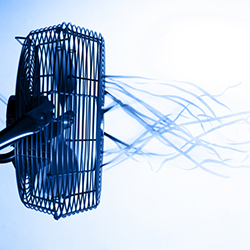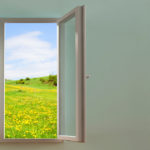Three cooling tips for homebuilders
 It’s July, and after a long, cold winter across most of North America, scorching summer temperatures have returned. While there is plenty for people to enjoy outside right now, many of us will undoubtedly be focusing on the indoor discomforts that come with the heat.
It’s July, and after a long, cold winter across most of North America, scorching summer temperatures have returned. While there is plenty for people to enjoy outside right now, many of us will undoubtedly be focusing on the indoor discomforts that come with the heat.
“It’s too hot to sleep.”
“My condo feels like a sauna.”
Every year we hear the same complaints. So, what if you have a client asking for a home that can be cooled efficiently? Here are three ways you can make your homes more livable in the summer:
1. Install an Energy-Recovery Ventilator, or “ERV” system. These ventilators provide year round benefits. They push stale, inside air out, while bringing fresh, outside air in. Their real advantage comes from introducing a heat exchanger into that process. It allows the conditioned air already inside a home to cool or warm, and humidify or dehumidify the incoming air. That means you won’t have to spend as much heating, or cooling it once it enters the house.
National Research Council of Canada testing found an air conditioner in an ERV equipped home used 12 per cent less electricity than in one without an ERV, facing the same outdoor climate conditions. Of course, all ERV’s require proper venting to and from the outside.
Plastic cap vents and hoods that allow plenty of airflow through the ducts, while maintaining the seal of the building envelope will help ensure optimum operation of the system.
2. Upgrade to high-power range hoods and bathroom fans. Warm air can carry a lot of moisture. Introducing water vapour into an already warm home can make conditions inside intolerable. Humidity makes air feel hotter than it actually is. Meteorologists even have a measurement to account for the perceived change. They call it the Humidex.
The high-power bathroom fan ensures moisture and heat generated from a bath or shower is efficiently carried directly outside. A range hood above a stove will carry away the steam, and heat created by cooking. Again, when venting to the outdoors, a one-piece vent or hood will help ensure a successful installation at the outside wall or on the roof.
3. Install a whole-house fan. These fans have been popular for decades, and can make a significant difference in homes that are not equipped with air conditioners or geothermal heat pumps. The idea is to have a fan positioned in the ceiling between the main living space and an attic, running continuously throughout the summer. It pulls warm air into the attic. By creating a positive pressure differential in the attic that hot air is then forced to the outside through gable, roof or soffit vents. In turn, it creates negative pressure in the living space, which will pull cooler outside air in through open windows.
For all of the reasons we spend our winters longing for summer, it’s important to make June, July, August and September enjoyable. Building a home designed to deal with summer’s many HVAC challenges will only add to the appeal of long days, and beautiful sunshine.



